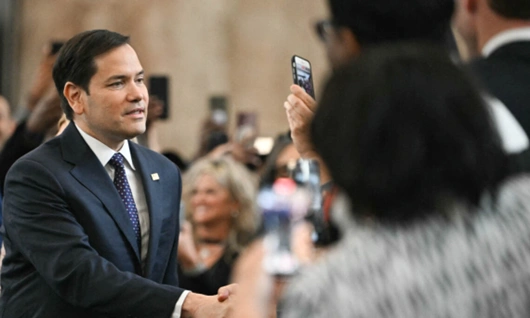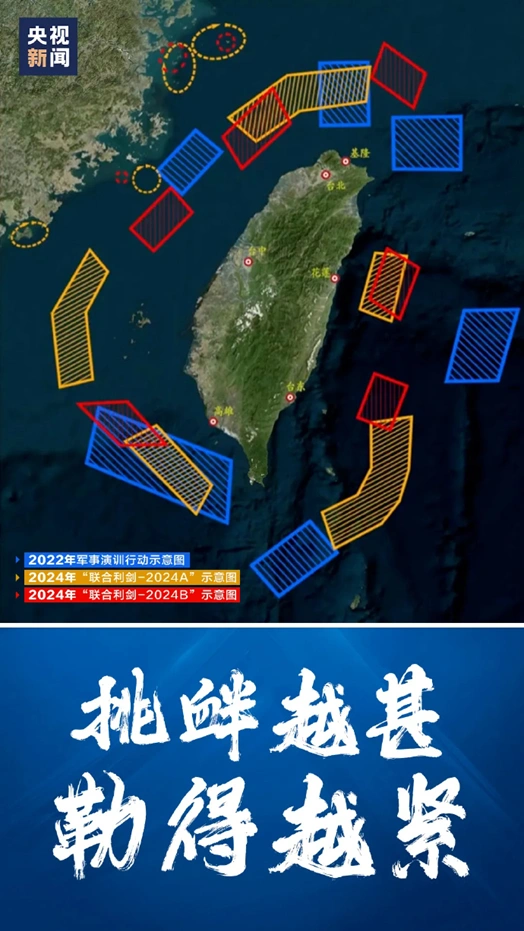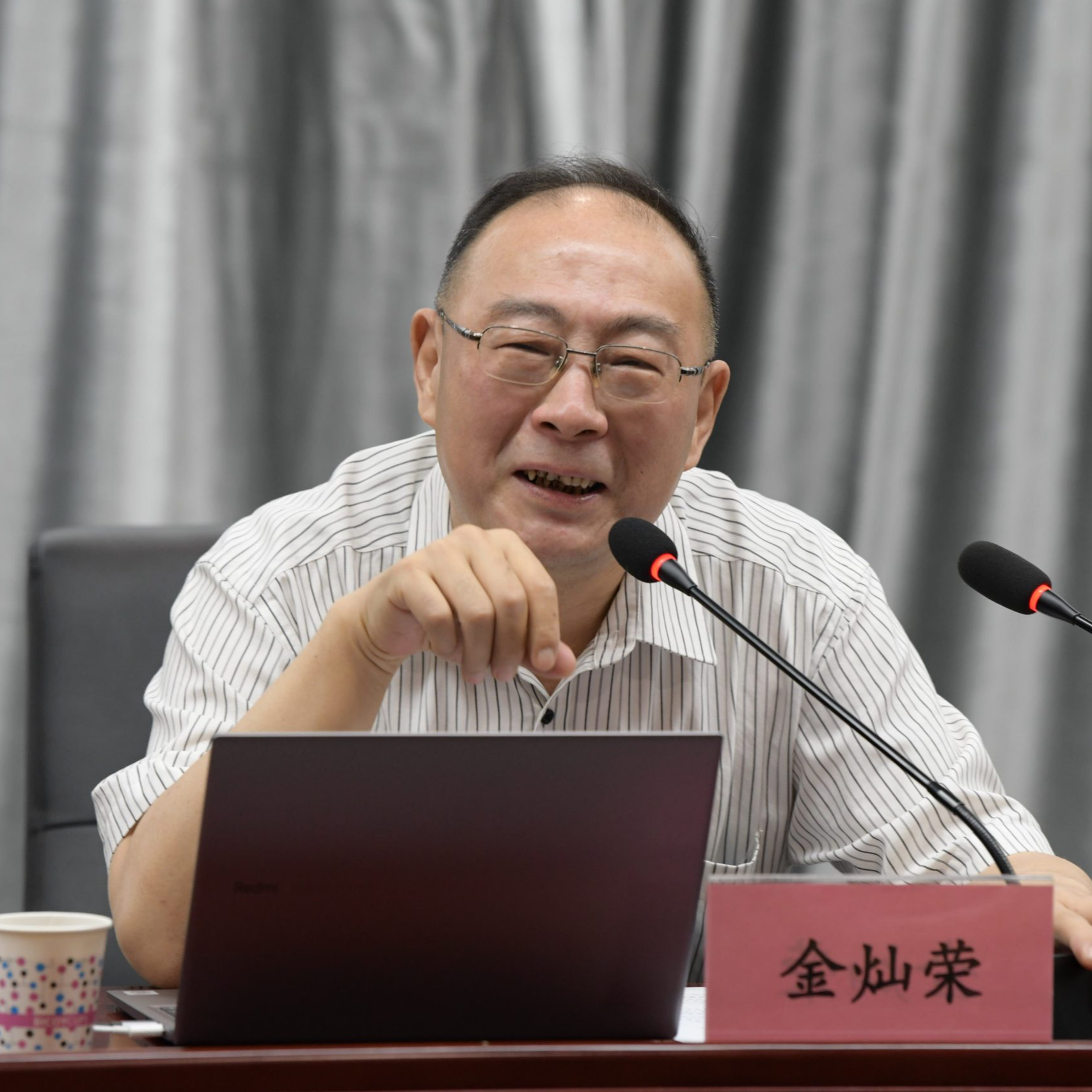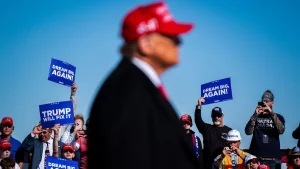A Chinese Expert Suggests Forming China’s Own NATO
Guan Cha: Not only in the Panama Canal but also on issues related to the South China Sea and the Taiwan Strait, Marco Rubio has repeatedly provoked China. Previously, in 2019 and 2024, Rubio authored two reports on China’s situation. The second report, The World China Made: ‘Made in China 2025’ Nine Years Later, contains substantial content indicating that at least some members of his team have been closely following China’s industrial policies for a long time and have a certain level of research on China. From your perspective, if Rubio becomes Secretary of State, would it be beneficial or detrimental to U.S.-China relations?
Jin Canrong: Since Donald Trump’s election, his attitude toward China has differed from his first term. Trump has previously praised China on multiple occasions and has taken some unconventional approaches. For example, in a press conference after his election last November, Trump spoke highly of China, calling the Chinese people “great people” and stating that he had a good working relationship with President Xi Jinping, believing that all issues between China and the U.S. could be resolved. Additionally, Trump even invited Xi Jinping to his inauguration ceremony on January 20.
Recently, a video circulating online shows Trump answering a journalist’s question, in which he praised China’s education system, calling it excellent. This suggests that in his “2.0 version” of policies, his stance is less aggressive than in his previous term, and he has even expressed some positive positions on the Hong Kong issue.
However, from a strategic research perspective, these statements are full of “insincere flattery.” Such flattering remarks are common among businessmen, who use them to gain advantages. The Chinese government remains calm regarding Trump’s words and believes that one should not be deceived by surface-level pleasantries. Scholars who follow U.S. politics are more concerned with Trump’s actual actions, particularly his appointments, because personnel decisions are politics in themselves. A leader’s choices in personnel often reflect their political inclinations.
A notable feature of Trump’s foreign policy in his second term is his appointment of numerous officials with a hardline stance on China. For example, the appointment of the Secretary of State carries significant symbolic importance. According to the U.S. Constitution, the position of Secretary of State is highly important, ranking fourth in the line of succession after the President and Vice President and being responsible for U.S. foreign affairs. In his latest cabinet appointments, Trump has named Rubio as Secretary of State. Rubio has long supported Taiwan independence forces and has made multiple visits to Taiwan, leading to his inclusion on China’s sanctions list by the Ministry of Foreign Affairs. Clearly, through this appointment, Trump is attempting to pressure China, as U.S.-China relations inevitably involve the Secretary of State, a key position in diplomacy.
Additionally, Trump has appointed Waltz as National Security Advisor, who is also known for his hardline stance on China. Therefore, despite Trump’s relatively moderate rhetoric toward China, his actions clearly indicate that his China policy remains tough.
In his recent remarks, Rubio has labeled China as the primary threat. Not only has he sought to consolidate the U.S. position in Latin America by excluding China, but he has also taken a series of actions around China, including supporting the Philippines in confronting China and leveraging the so-called “China threat” narrative to push countries like Japan to join in countering China.
 New U.S. Secretary of State Marco Rubio
New U.S. Secretary of State Marco Rubio
One of the focuses of Trump’s 2.0 foreign policy is territorial expansion, while another is promoting the return of American manufacturing through trade wars. As of February 1, Trump has imposed an additional 10% tariff on all Chinese products, which has undoubtedly negatively impacted U.S.-China trade relations. In response, the Chinese government has implemented countermeasures, including imposing tariffs on certain American products—particularly oil, gas, and agricultural goods—and placing some U.S. companies on an entity list. Additionally, China has launched an investigation into Google, restricted the export of certain minerals, and filed a protest with the World Trade Organization (WTO). These measures indicate that, in a sense, the U.S.-China trade war has entered a formal stage of confrontation.
The core diplomatic strategy of Trump’s 2.0 remains focused on countering China. He is restructuring America’s foreign policy layout, aiming to strengthen U.S. power by annexing territories such as Canada, Greenland, and Panama while also proposing to take over Gaza and occupy a strategic piece of land in the Middle East. While these actions may seem far-fetched, they make sense when viewed as preparations for an ultimate strategic showdown with China. Whether in Trump’s 1.0 era or 2.0 era, it is clear that a series of measures have been paving the way for a final confrontation.
If you believe that a certain opponent is extremely powerful and that a showdown with them is inevitable in the future, then it is only natural to prepare for that final battle. Domestically, Trump is laying a stronger foundation for the U.S. by strengthening manufacturing, expelling illegal immigrants, and fostering social cohesion. He is also reviving traditional values to boost the economy and further unify society.
Internationally, Trump’s strategic choices include significantly expanding North America’s territory to turn the U.S. into the world’s largest empire, winning over Russia at Ukraine’s expense to contain China, securing key positions in the Middle East—Eurasia’s strategic core—to improve America’s geopolitical standing, and tightening control over allies to strengthen U.S. global influence. For instance, Japanese Prime Minister Shigeru Ishiba recently visited the U.S.; despite his strong rhetoric in Japan, he appeared much more cautious upon arriving in America. The ultimate goal of these moves is to prepare for a long-term strategic competition with China.
Since entering the Trump 2.0 era, although his rhetoric has appeared more moderate than before, his actions remain unwavering in advancing policies against China.
In response to this situation, I believe China should remain calm, fully prepared, and continue to strengthen its domestic capabilities while deepening diplomatic relations. Chairman Mao’s three fundamental strategies—”united front, armed struggle, and party-building”—remain relevant today. Upholding these principles will help China secure a favorable position in global competition.
Guan Cha: Returning to Trump’s China policy after taking office, it essentially continues his past style: creating bargaining chips, misdirecting, making excessive demands, and being unpredictable—even changing his mind every second, as seen in issues like tariffs and small exemptions. Is Trump’s unpredictability a deliberate tactical approach, or does it indicate a flawed decision-making mechanism that prevents him from making effective, consistent policies?
Jin Canrong: Dealing with Trump requires abandoning conventional thinking. His leadership style is vastly different from traditional political leaders—erratic and unpredictable. In his first term, Trump was known for his “Twitter governance”; even now, he continues to act impulsively, often making decisions on a whim. He calls his governance style “The Art of the Deal” and takes great pride in it. However, his ultimate goal has always remained firm: “Make America Great Again” (MAGA). This goal is crystal clear—Trump is implementing an “America First” strategy and using various means to revitalize the U.S.
For many smaller nations, Trump’s bluffing approach often forces them to concede. For example, Colombia initially refused to accept the repatriation of illegal immigrants, but after Trump imposed trade sanctions, Colombia quickly reversed its stance. This tactic has worked repeatedly in various countries, but it has failed with China because China’s national strength has grown significantly.
Although some self-media outlets and public intellectuals have been hyping up the idea that the GDP gap between China and the U.S. is widening—suggesting that China’s GDP as a percentage of the U.S. economy has declined from 77% in 2021 to 61% in 2024, implying that America’s economic advantage is expanding—people are gradually realizing that these figures are not entirely accurate. The hidden factors behind them include the appreciation of the U.S. dollar and American inflation. According to purchasing power parity (PPP) calculations, China’s GDP has already reached approximately 130% of the U.S. GDP, and according to CIA estimates, it is close to 160% of the U.S. GDP.
China has far surpassed the U.S. in terms of production capacity. For instance, China produces 1.35 billion tons of steel annually, whereas the U.S. produces only a few tens of millions of tons. In shipbuilding, China’s output is 232 times that of the U.S.; in cement production, China’s output exceeds the U.S. by 50 times. In almost every sector of production, China holds an overwhelming advantage. Even in agriculture, China leads in grain, vegetable, and meat production, and its per capita protein consumption has already surpassed that of many developed countries.
 Xinhua News Agency
Xinhua News Agency
Today, China’s productivity has far surpassed that of the United States, meaning China has no reason to fear Trump’s actions. The bluffing-style hardline tactics in Trump’s foreign policy have no real effect on China.
Historically, the rise of the West was driven by industrialization, and today, China’s rise follows a similar path. However, unlike the West, China’s industrialization is on an unprecedented scale. One of the most significant global realities is that China has already completed its industrialization, establishing the world’s largest and most comprehensive industrial system while also demonstrating strong innovation capabilities.
With this confidence, the Chinese government has maintained a calm and composed stance in response to Trump’s disruptions. Meanwhile, online self-media and so-called public intellectuals often attempt to influence the Chinese public by spreading panic and negative narratives. They treat the Chinese people as easily swayed, but in reality, they are nothing more than fearmongering opportunists profiting from misinformation.
In the military field, China has gradually surpassed the U.S. in several key areas. On September 25 last year, China successfully launched the DF-31AG intercontinental ballistic missile (ICBM), completing a full-range flight test. During the same period, ICBM tests in the U.S., Russia, and the U.K. all encountered issues. France claimed to have conducted a successful test, but no actual observations were recorded—suggesting that their test may have been nothing more than a PowerPoint presentation. Among the five permanent members of the UN Security Council, China was the only one to complete a fully successful test. Furthermore, in addition to the DF-31AG, China also possesses the DF-41 missile, and the DF-51 is expected to be unveiled soon.
At the Zhuhai Airshow, China showcased a wide range of drones, including the Jiutian drone system, which can carry multiple smaller drones in its cargo bay. These “baby drones” can fly over 8,000 kilometers. If deployed on aircraft carriers, such drone swarms would be extremely difficult for adversaries to defend against. Additionally, the J-35A stealth fighter was exhibited at the airshow, and on the birthday of a great leader, Chairman Mao, China conducted test flights of its sixth-generation fighter jet in both the north and south of the country—achieving a technological lead over the United States.
The U.S. has long kept a close watch on China, attempting to exert pressure through various means. However, as China’s comprehensive national strength has grown, Washington’s suppression efforts have proven ineffective. A prime example of this occurred last year when U.S. Indo-Pacific Commander Samuel Paparo proposed using unmanned combat systems to strike China, planning a massive drone offensive to create a so-called “hellscape” and deter China from military action regarding Taiwan. However, after the Zhuhai Airshow, Paparo changed his stance. He realized that if the U.S. could deploy 3,000 drones, China could deploy 300,000—meaning the U.S. would be overwhelmed, not China.
Today, China’s near-seas military power has surpassed that of the U.S. While the U.S. remains focused on global maritime dominance, capable of confronting China in deep Pacific waters or the Indian Ocean, China is not obligated to engage in such contests. China’s strategic goal is clear: national reunification and territorial defense.
The U.S. strategy suffers from a fundamental flaw: it aims for global dominance, requiring the ability to attack any country at will. In contrast, China’s sole strategic goal at present is reunification—a minimum requirement that effectively prevents the U.S. from exerting unchecked pressure. China now possesses the capability to achieve this goal, fundamentally disrupting America’s strategic logic. The U.S. military mindset operates on the assumption, “I can strike anyone I want,” but it has now reached the realization that this no longer applies to China.
Looking ahead, if China chooses to engage in direct competition with the U.S., it can firmly state: “You cannot freely use force against nations closely aligned with China, such as Cambodia, Thailand, or Pakistan.” In this scenario, the U.S. would be forced to accept a new reality: “I can strike anyone I want—except China and its protected allies.” Over time, this list will only continue to expand.
 Regions Covered by Past “Joint Sword” Exercises. Below Chinese Means ‘The more you provoke, the tighter the stranglehold’.
Regions Covered by Past “Joint Sword” Exercises. Below Chinese Means ‘The more you provoke, the tighter the stranglehold’.
Once this precedent is set, all countries that have been oppressed by the United States will seek China’s support, just as people once flocked to Yan’an. They will join China’s ranks, forming an increasingly large protective alliance. Although China’s strategic nature remains defensive, its growing national strength has given it the capability to challenge U.S. global hegemony.
In the field of technology, China’s performance is equally remarkable. According to the recently published Nature Index, China’s advantages in scientific research have become increasingly evident. Over the 12 months starting from November 2023, China’s top research institutions—including the Chinese Academy of Sciences, the University of Science and Technology of China, and Tsinghua University—ranked among the top three globally in physics research. In contrast, the highest-ranked U.S. institution was only 13th, proving that China is leading in global scientific research.
Furthermore, China now accounts for more than half of global patent applications, demonstrating its strong innovation capabilities. For example, China’s AI model DeepSeek has stunned the world, marking a major breakthrough in the technology sector.
In robotics, Unitree Robotics from Hangzhou has surpassed U.S. humanoid robots, attracting global attention. Although Hangzhou is a relatively small city, it has showcased immense innovation potential, emerging as a new powerhouse in the tech industry. At the same time, China’s gaming industry is also rising rapidly, with Feng Ji’s Black Myth: Wukong becoming a global sensation in the gaming world.
These achievements highlight China’s strength in technological and industrial innovation, surpassing many traditional powers and, in some areas, even exceeding the United States.
Of course, there are still areas where China needs to improve. The financial sector remains a weakness. For a long time, the global financial market has been dominated by the U.S., which has used financial mechanisms to extract wealth from other countries, diverting economic benefits away from China. This imbalance reflects China’s relative weakness in the global financial system.
Additionally, China’s intellectual and elite circles have yet to fully break away from dependence on the United States. Despite significant progress in economic and technological fields, some elites still exhibit a kowtowing mentality toward the U.S. This psychological imbalance sometimes leads China to be overly accommodating under international pressure, causing ordinary people to lose the wealth they have worked hard to earn. This is an internal issue that China urgently needs to overcome.
In conclusion, as Trump’s 2.0 government implements its policies and frequently stirs up conflicts, China remains highly composed, showing no signs of panic. Behind this composure is a strong grip on domestic affairs and confidence in the country’s rapid advancements in industrialization, technological innovation, and military strength. As long as China steadily advances domestic reforms and focuses on its own development, it will be able to effectively respond to the challenges posed by the United States.
Editor: Leo Cai




Alessandro OsteGrogno Grognardi